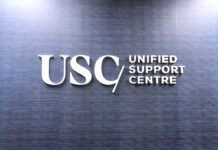Carleton’s residences have morphed over the years to adapt to the times and cater to the ever-changing face of the university’s student population.
The campus is home away from home for more than 3500 students this year with the addition of the new residence building, Lennox and Addington, said David Sterritt, director of housing and conference services, in an email.It’s scheduled to be completed by the end of October, Sterritt added.To many students, residence also provides a sense of community, said Jeremy Brzozowski, coordinator of student development and first-year experience, and former Rideau River Residence Association (RRRA) director of programming and marketing (now known as vice-president programming).
“The residence life team is keenly focused on providing a good experience,” Brzozowski said.
Memorable events during his time at Carleton’s residences included the annual touch football tournament, regular rap-offs in the hallways, and the inaugural Residence Idol, which he said was a neat experience and a celebration of Carleton talent.
Brzozowski spent four years living in residence, serving as a residence fellow as well as a RRRA executive during that time, he said.
Carleton opened its first residences, Renfrew House and Lanark House, in 1962, Sterritt said.
The total residence population at this time was over 300, just a tenth of its current capacity, according to RRRA.
Renfrew, which originally housed women only, became the first integrated co-ed residence at Carleton in 1969, Sterritt said.
It was also the first co-ed residence in the country, according to RRRA.
The balconies of Renfrew and Lanark were sealed in the 1981-82 year under pressure from the City of Ottawa, after an unfortunate incident involving a drunk off-campus student, according to RRRA.
Stormont House and Dundas House opened in 1991, with 20 ground floor rooms designed to be fully accessible to men and women with physical disabilities, Sterritt said.
Carleton opened its first suite-style residence, Leeds House, in 2001. Today, there are three.Prescott House and Frontenac House are the others.
From 2005 to 2010, the Glengarry, Lanark, Russell and Grenville residences all underwent major renovations, Sterritt said.
Fees have also increased over time to reflect the value of the dollar and current inflation rates.
A single room in the 1975-76 academic year was $1,450, while a double was $1,320, according to RRRA. Dorm fees this academic year, according to the Department of Housing and Conference Services website, range from $6,743 to $11,271, depending on the residence building and meal plan.Despite the all the changes over time, a few things have remained constant. Last year, the university belatedly realized it was out $28,000 in laundry bills, Ed Kane, assistant vice-president of university services, told the Charlatan in March.
A similar problem arose years prior, when in February 1970, there was over $5,000 of uncollected phone bills outstanding in residence, according to information provided by RRRA.
That $5,000 is equivalent to more than $29,000 in today’s currency. Brzozowski said his experience in residence was “more defined by the people [he] met,” adding that living on residence allowed him to be a part of a wonderful community.
There was always someone around that shared similar interests, and everyone knew their neighbours’ names, Brzozowski said.
From great friends to great blunders, Carleton’s residences have stood the test of time over the decades. And one thing has never changed: life in residence at Carleton is anything but dull.





